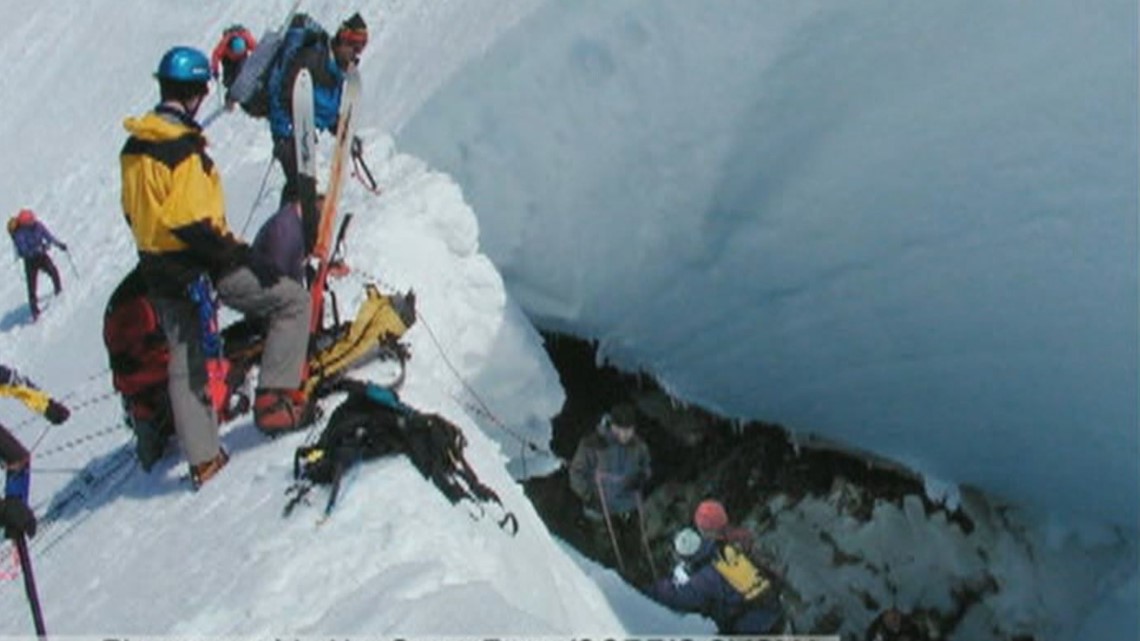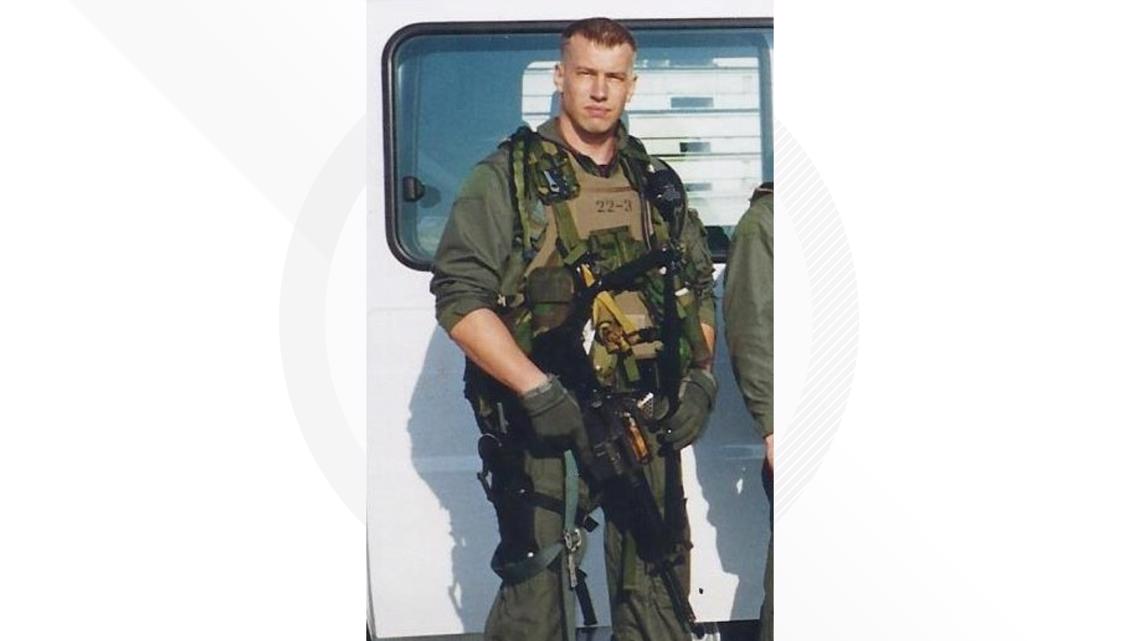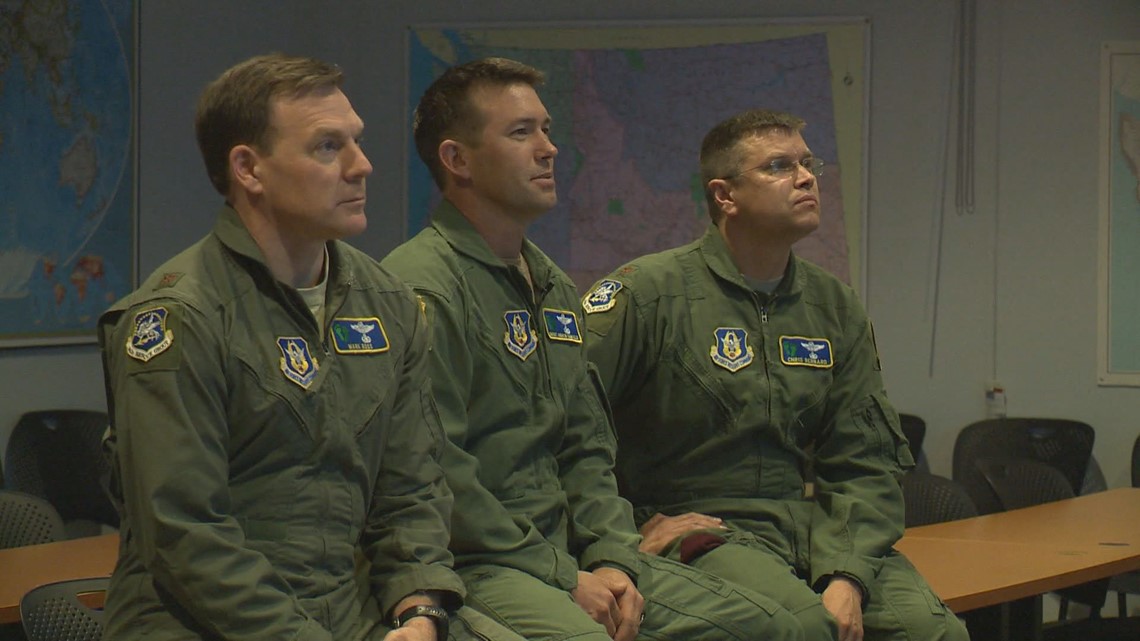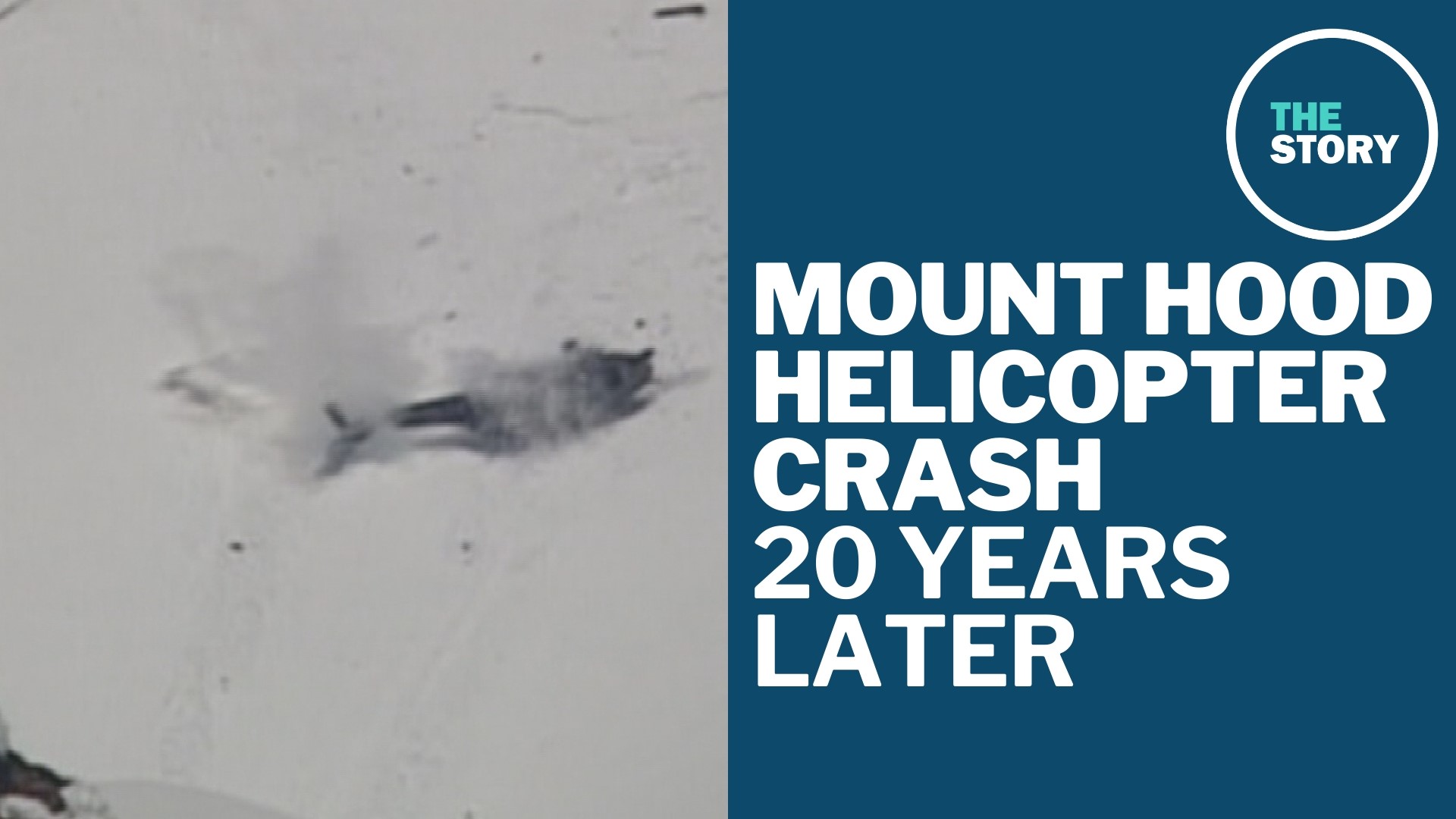PORTLAND, Ore. — Monday marks the 20th anniversary of one of the most dramatic climbing disasters ever to occur on Mount Hood, when a rescue helicopter dispatched to aid a group of fallen climbers suddenly crashed into the mountainside.
Three climbers died in the hiking accident that prompted the rescue, but miraculously, no one on the ground or in the helicopter was killed in the crash.
KGW reporter Pat Dooris remembers the day well, because he was there providing coverage of the rescue operation when the helicopter went down, and the crash was broadcast live.
Climbers injured
Steve Rollins from Portland Mountain Rescue led the operation on May 30, 2002, and he said he'll never forget it either.
"God, I cant believe its been 20 years," he said. "It does- I don’t know, there’s part of me that wants to say it seems like it was yesterday and then there's part of me that’s like 'God, that was so long ago' and whatnot."
The day dawned bright and beautiful, with perfect conditions for climbing Mount Hood, and by 9 a.m. several groups were hiking a popular route on the south side of the mountain at an elevation of about 10,900 feet. Some of them were still going up, while others had already reached the summit and were returning.
A group of four men were roped together and making their way down the mountain when one of them lost his footing and fell, pulling the other three down despite their efforts to stop themselves.
The four hit two other men who had been making their way up and were also roped together, and they were dragged along as the group tumbled down the mountainside, hitting three more roped-up people on the way.
The route includes a 50-foot-wide, 20-foot-deep crevasse called a bergschrund that opens each spring, and all nine climbers fell into it, killing three — Bill Ward, Rick Read and John Biggs — and critically injuring four others.


Helicopter brigade
Rollins and others rushed to the mountain to stage a rescue operation. Multiple Oregon National Guard helicopters were also dispatched to the site, and they airlifted the first two of the injured climbers to safety.
"I just remember the chaos like, we were scrambling to keep up with the helicopters," Rollins said. "The helicopters were coming in almost on top of each other."
Another helicopter — a Pave Hawk from the Air Force — made its way to the Timberline Lodge parking lot. From there, it was going to fly a para-rescue crew partway up the mountain and deposit them to climb up the rest of the way.
But as the crew prepared to leave, they got word that one of the injured climbers still in the crevasse was near death. So they decided to fly all the way up, to a height that would push the heavy chopper near its safety limit.
"That’s what we were doing that day on the mountain. We were right at the edge of our operating capability," pilot Grant Dysle told Dooris in an interview in 2012. And most of the time, being at the edge is OK, Dooris noted.


"Yeah. Most of the time," Dysle replied. "And that day Mother Nature had other plans for us and I guess the video shows the rest."
The crash
Dooris was watching and broadcasting live from KGW's helicopter, SKY 8, as the Pave Hawk took position over the crevasse and began to lower a rescue basket.
Suddenly the wind shifted from the front of the Pave Hawk to the back, causing it to loose lift. Without lift, helicopters can't fly, and the Pave Hawk was hovering just over the crevasse with no room to recover.
The broadcast video shows the helicopter began to wobble and flew a short distance down the mountain, drifting 180 degrees in midair as the one side sank too close to the ground.
"There we go talking about things going wrong- hang on fellas! Oh My Goodness. Oh that’s horrible," Dooris remarked on the broadcast as the helicopter's rotors clipped and sent the Pave Hawk tumbling down the mountainside. It rolled eight times before coming to a stop.
Dysle said he could've avoided the crash, but only by dropping the helicopter straight down, and there were about 20 people clustered directly beneath it. So when he realized he was losing control, he made a split-second decision to fly away from the crevasse.
"So rather than, you know, have a huge tragedy there, I chose to take it down the mountain and try to get away from those folks," he said.
As the chopper moved away, flight engineer Martin Mills cut the hoist cable connected to the third injured climber, Jeremiah Moffitt. The move saved Moffitt's life.
Inside the chopper
Before the crash, as it hovered above the crevasse, the Pave Hawk hovered as the crew prepared to raise the basket that held an injured climber. A PJ named Anthony Reich was on the ground, waiting to be lifted with the basket.
Mills, connected to the inside of the helicopter with a gunner’s belt, lowered the cable and Reich hooked up the lifter. Mills began lifting the basket — he remembers it being 10 feet or less off the ground when he felt the helicopter lurch. “Sort of like an elevator that lurches,” he said.
Mills remembers the pilot, Grant Dysle, on the intercom saying "we’re drooping," which meant the helicopter rotors were losing power. Mills said that was not an unheard-of development, and had happened earlier during a high altitude rescue in the Steens Mountains.
Mills fell backwards into Darrin Shore, then reached back for the side door where the cable was operated from.
“Are we gonna get it back?” he asked into the intercom. There was no time for a reply.
“Right then the bottom fell out,” said Mills. He cut the cable to the basket on the ground then dove for his seat in the helicopter.
Unlike the pilot, co-pilot and another PJ in the back, Mills was not strapped into his seat.
When the Pave Hawk hit the mountain, Mills held on to his seat with all his strength. It was not enough.
Twenty years later, Mills remembers what happened clearly. Half his body was thrown out the side door, Mills remembers, with his head and upper body inside. His legs were thrown up into the helicopter rotor which was still spinning, even though the blades had shattered on the snow. The impact with the rotor crushed his right ankle and tore up his left knee.
The helicopter was still rolling. Mills, trapped by his gunner belt, was stuck half in and half out of the machine. The helicopter rolled over him and pulled him up the back side.
In an instant, he thought, that sucked!
Snow filled the visor of his helmet and he could not see. The chopper rolled over a second time with him still trapped — now outside the helicopter, but still attached to the gunner’s belt.
"That sucked more," he remembers thinking.
It wasn't over. The helicopter rolled a third time with Mills still stuck to the outside. “I was rag dolled — really whipped over the top,” he recalled.
On the fourth roll the gunner’s belt finally broke and launched him down the mountain where he landed in a sitting position facing downhill. He remembered a brief moment thinking he’d finally gotten away, then the helicopter rolled over him one more time from behind — forcing his upper body flat into the snow between his legs.
Mills blacked out.
He remembers waking up, perhaps 30 seconds later to see the chopper crew running away from the Pave Hawk, which finally had stopped its tumble down the mountain.
The first rescuer to reach Mills was a Mount Hood Ski Patrol member. Mills believes his name is Jeff Livick, and all these years later would like to say thank you.
“He sat behind me and wrapped his arms and legs around me and held me, acting as a human splint for my back injury, and calmed me down,” Mills remembers.
After what he’d just been through, Martin Mills refused a ride off the mountain in a different rescue helicopter and demanded he be skied down in a sled pulled behind the ski patrol. It was a painful 45 minutes before he was at the Timberline parking lot and flown to Emanuel Hospital.
Mills said he spent eight days in the ICU, and since has had five surgeries on his right ankle and one surgery on his left knee. He said the crash also tore many nerves in his lower back and fractured two ribs and lacerated his liver.
It's left him a lifetime of pain, and he’s had to give up most of the sports he loved. Mills spent two more years in the Air Force after the crash, essentially on medical leave, before he was discharged and entered into the VA disability and healthcare system.


Reliving the crash
Ten years ago, other members of the pararescue team in the back of the helicopter watched the video again to share what it was like. Team member Andrew Canfield said he had been standing in the back, ready to jump out and get to the patient as the mountainside came closer.
"As soon as [the helicopter] started wobbling around my first thought was 'I want out,'" he said, laughing.
He unclipped his safety harness to make the jump, but in an instant the ground became too far away. He grabbed teammate Darrin Shore as the chopper hit the mountainside and began to roll.


"I could see gear, packs, snow all churring around," Shore said. "I use the sock in the dryer analogy for that one."
Shore said he wanted to climb up and jump out the door, but he couldn't find anything to grab onto. Physics solved the problem for Canfield; the centrifugal force increased as the helicopter rolled, and after a couple seconds he was flung out the side.
"When I got ejected from the helicopter I felt like 'oh thank God, I’m free of the helicopter, I’m gonna be okay,'" he said. "Just an instant after that I realized I was downhill and it was overtaking me... I rolled like 8 times before it rolled over me."
Incredibly, the soft snow allowed Canfield to survive getting rolled over by the helicopter, although he suffered back and neck injuries and burns from the engine cover.
Shore had a broken leg and ribs but survived as well, as did the third member of the rescue team. Despite shooting off in multiple directions, the shattered pieces of the helicopter's rotor blades didn't hit anyone either.
Even the Pave Hawk itself survived the crash; the Air Force later lifted it off the mountain and eventually put it back into service.
Twenty years later, the incident is still a tragedy for the families of those who died, and a day many rescuers will never forget.
"That's something I'll remember 'til the day I die," Rollins said.

